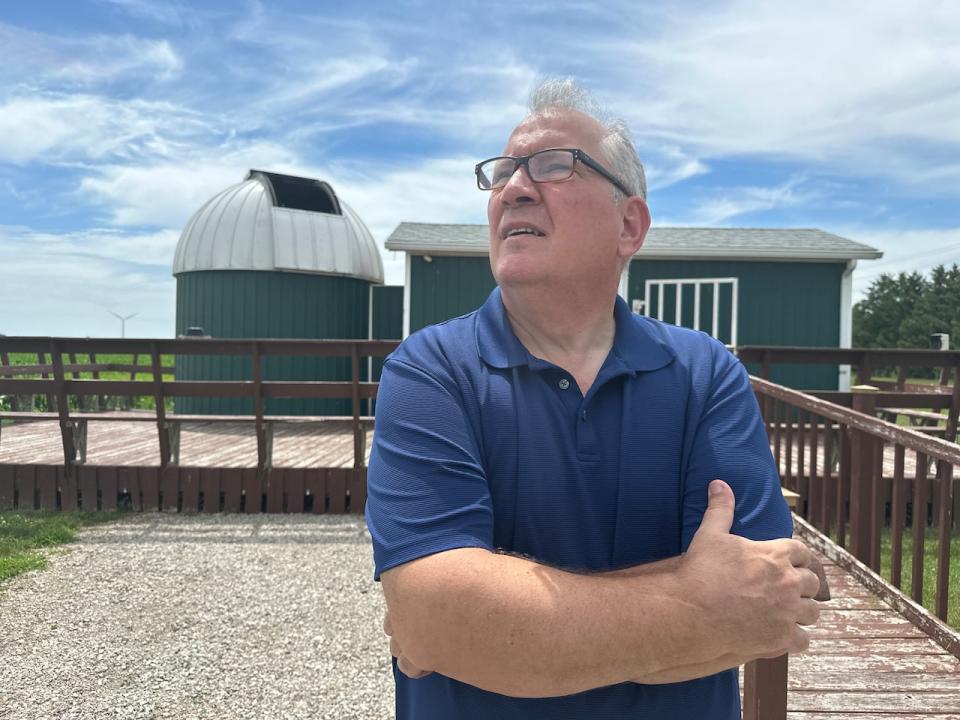This new star will soon be visible in Windsor's night sky, for the 1st time in 80 years
A dead star thousands of light-years from Earth is about to explode — and you'll be able to see it in Windsor.
Sometime over the next few weeks, though scientists can't pinpoint an exact date, T Coronae Borealis, a dead star, will explode. It'll be visible in Windsor as a new star in the northeastern sky.
But the explosion happened so far away — 2,600 light-years away — that we will only soon be able to see it.
Steve Pellarin is an astronomy professor at the University of Windsor and vice-president of the Windsor chapter of the Royal Astronomical Society of Canada.
He said the explosion is caused by the dead star, T Coronae Borealis, locked in a swirling orbit with another star.
"Eventually the temperature reaches 10 million degrees C or so, and that bottom layer [of matter] fuses. It ignites suddenly and we have this thermonuclear detonation that happens on the surface," he said.

Pellarin said the nova will be visible to the naked eye in the northeastern sky. To spot it, he says observers can look at the Big Dipper, following the direction of the handle on the pot-shaped constellation. When you spot a horseshoe-shaped constellation known as Coronae Borealis, the new star will be just to the left.
There are also apps you can download, Pellarin says, that will help you spot it and other constellations.
The new star will only be visible for about a week, but Pellarin says that because the phenomenon is fairly predictable — it happens about every 80 years — scientists can learn a lot from it.
"By understanding this first prototype ... it can help us to make predictions about all the other types as well," said Pellarin.
But the phenomenon is also of interest to casual and amateur astronomers.
Sheri Lynn Koscielski is a Girl Guide leader and will be running a week-long camp this month called Shooting for the Stars.
"Getting a chance to see astronomy and know more about our natural space and all about space is huge," said Koscielski.
Marin Leether Williston, 8, just got a telescope for Christmas and will be going to the camp.
"I like to look at the stars the moon and the planets," she said.
Pellarin said the nova will be visible in the Northern Hemisphere just after dark.

 Yahoo News
Yahoo News 
